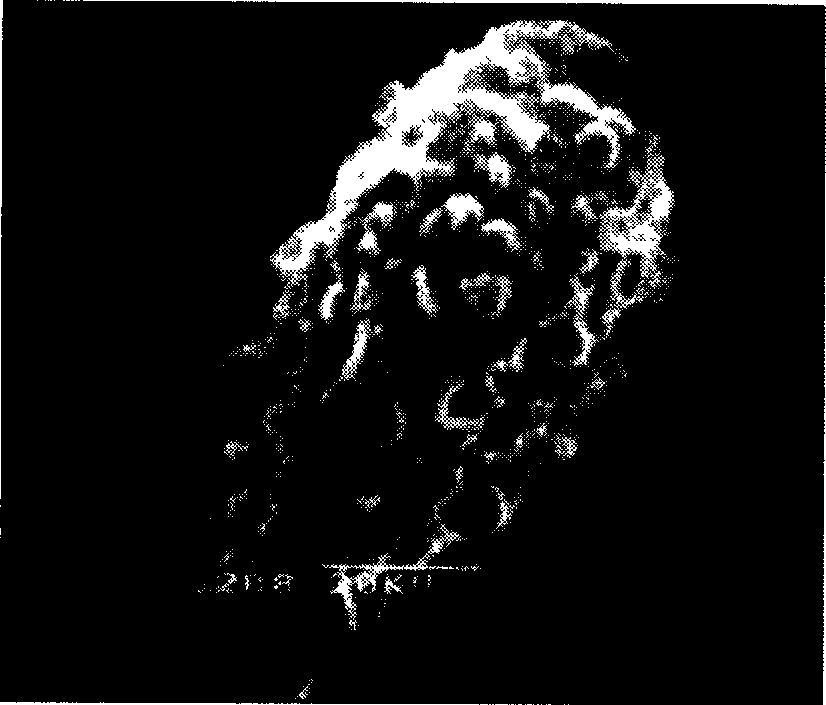New strain and method of producing pacilitaxel using said strain
A paclitaxel and variant technology, applied in the directions of using fungi, microorganism-based methods, biochemical equipment and methods, etc., can solve the problems of difficulty in industrial production, waste of land and manpower, low yield of paclitaxel, etc., and can meet clinical drug requirements. needs, solving process problems, and protecting the effect of natural resources
- Summary
- Abstract
- Description
- Claims
- Application Information
AI Technical Summary
Problems solved by technology
Method used
Image
Examples
Embodiment 1
[0039] Example 1 Isolation of taxol-producing microorganisms from yew tree samples
[0040] We collected 310 samples from the branches, bark, leaves and root bark of seven Yunnan yew (Taxus yunnanensis) trees more than 300 years old in the mixed coniferous and broad-leaved forest at an altitude of 2500-3000 meters in Laojun Mountain, Lijiang area, Yunnan Province. Each was cut into small pieces of 1cm×1cm size, sterilized with 50-90% alcohol for 5 minutes, homogenized with a homogenizer, and then spread on PDA medium, cultured at 25°C for 4-5 days, and the grown The hyphae were transferred to the slope, cultured at 20°C-35°C for 4 days, and 1cm 2 Bacteria were inoculated in the fermentation medium (250ml Erlenmeyer flask capacity 100ml, medium formula: glucose 2%, soybean cake powder 0.5%, peanut cake powder 0.2%, MgSO 4 : 0.01%, KH 2 PO 4 : 0.05%), 25 ℃, 300rpm in the shaker culture 16 days, filter with double-layer gauze, get wet thallus, wet thallus is dried in oven (60 ...
Embodiment 2
[0041] Example 2 Purification and identification of new strains producing paclitaxel
[0042] Several paclitaxel-producing strains obtained in Example 1 were separated and purified on PDA medium plates for three generations (20-35°C, 4-10 days) to obtain the ST-026 strain. Strain ST-026 grows rapidly on PDA medium and produces abundant spores, which are usually black or olive green. Conidiophores grow directly from the agar medium, and branch conidia chains grow on the side shoots of the hyphae. The spore chains consist of 50-70 spores, the initial spores are produced directly from the sporophore, or from 1-2 spores are produced on the soil surface, spores are rod-shaped, oval-elliptic, about 22-31(25)X 9-13(11)UM in size, with 4-5 transverse septa, 2-3 ratio septa or oblique diaphragm. The initially formed young spores are narrowly oval, with dense, fine verrucous protrusions, such dense protrusions that the internal diaphragm of the spores cannot be seen clearly under a 10...
Embodiment 3
[0044] Example 3 Seed culture
[0045]Inoculate the obtained CGMCC No.0899 freeze-dried bacteria of Example 2 into a 250ml Erlenmeyer flask with 100ml seed culture medium (see Table 1), at 20~30°C, 100-300rpm shaker culture for 24-28 hours, to be ready Inoculated strains.
[0046] Element
PUM
 Login to View More
Login to View More Abstract
Description
Claims
Application Information
 Login to View More
Login to View More - R&D
- Intellectual Property
- Life Sciences
- Materials
- Tech Scout
- Unparalleled Data Quality
- Higher Quality Content
- 60% Fewer Hallucinations
Browse by: Latest US Patents, China's latest patents, Technical Efficacy Thesaurus, Application Domain, Technology Topic, Popular Technical Reports.
© 2025 PatSnap. All rights reserved.Legal|Privacy policy|Modern Slavery Act Transparency Statement|Sitemap|About US| Contact US: help@patsnap.com



